- Invacare’s Oracle ERP failure is a case study in ERP cost overruns and medical manufacturing ERP failure.
- The project disrupted compliance, traceability, and customer confidence—issues critical in regulated industries.
- Common drivers of failure include misaligned business cases, vendor over-reliance, readiness gaps, and weak governance.
- Executives can reduce risk with independent ERP selection and implementation guidance and strong change management.
Invacare’s well-documented struggles with its Oracle ERP system became a cautionary tale across the medical device industry.
The project aimed to unify global operations, streamline compliance, and strengthen Invacare’s competitive position. Instead, it triggered significant disruption and ultimately became a case study in ERP cost overruns and missed expectations.
For executives considering their digital transformation plans, the Invacare story offers valuable lessons. Today, we’ll look at what can happen when ERP projects lack careful execution.
Contemplating litigation?
We have multiple software expert witnesses available for provision of reports, depositions, and testimonies.
The Anatomy of a High-Profile ERP Failure
Invacare started its Oracle ERP project with some common promises. These included integrated processes, less complexity, and real-time data visibility in manufacturing and distribution. Yet the outcome reflected the opposite. Operations were disrupted, customers faced order delays, and the company shouldered massive ERP cost overruns.
The ERP failure was especially damaging because of the industry context. Medical device manufacturing demands rigorous compliance with FDA standards, meticulous product traceability, and supply chain resilience.
An ERP system in this space must support highly complex data requirements and quality assurance processes. When Invacare’s Oracle ERP failure compromised these core capabilities, it undermined regulatory readiness and customer confidence.
This is why medical manufacturing ERP failure carries broader risks than in other industries. Delays or errors do not only affect financials; they can impact patient outcomes and brand reputation.
Why Executives Should Care
- ERP cost overruns create ripple effects. A budget blown by tens of millions can lock up capital, slow innovation, and trigger shareholder concerns.
- Oracle ERP failure isn’t unique. Any platform, when implemented poorly, can stumble. The vendor matters less than the clarity of governance and readiness of the organization.
- Medical manufacturing ERP failure magnifies risk. Compliance, quality, and traceability are non-negotiable. Weak ERP execution compromises all three.
The key lesson is that ERP is not just a technology purchase. It is a long-term change involving people, processes, and data.
The Hidden Drivers of Failure
Based on what our ERP selection consultants see across industries, ERP breakdowns tend to follow recognizable patterns:
1. Misaligned Business Case
Invacare’s system was expected to drive efficiency and unify operations, but executives underestimated the process complexity beneath the surface. When an ERP business case is framed only in IT terms, it sets the stage for disappointment.
2. Vendor Over-Reliance
Oracle’s brand credibility led stakeholders to assume the system itself would solve business challenges. But even the strongest ERP software falters when the implementation partner is misaligned or underqualified. Our software expert witness team has seen dozens of cases where partner accountability went unchecked until it was too late.
3. Organizational Readiness Gaps
ERP selection and implementation succeed only when a workforce is prepared for change and an organization is disciplined in its data and processes. Readiness typically starts with organizational change management: employees must understand why the system is being introduced, how their roles will shift, and where to go for support. When readiness collapses, even the best ERP software delivers subpar outcomes.
4. Weak Post-Go-Live Governance
Invacare’s experience underscored the danger of treating go-live as the finish line. ERP systems evolve continuously. Without ongoing project governance, issues compound rather than resolve.
Universal Lessons for ERP Leaders
From these drivers, a set of universal lessons emerges. Whether you lead a medical device manufacturer, an industrial supplier, or a consumer products company, the following practices reduce your exposure to ERP cost overruns and implementation setbacks:
1. Demand Independent Guidance
Engage an ERP selection consultant with no financial ties to vendors. True independence ensures your selection process is aligned with your business needs, not referral fees.
2. Test Business Complexity Early
Before signing contracts, we recommend replicating real-world workflows in vendor demos. This stress-testing often reveals hidden gaps that glossy demos conceal.
For example, if you’re evaluating AI in ERP, it’s important to test its real-world ability to improve forecasting, automate compliance checks, and surface anomalies in real time.
3. Treat Change Management as a Core Workstream
ERP systems succeed or fail based on adoption. Equip leaders with tools to engage employees, build confidence, and reinforce process ownership.
4. Build Long-Term Vendor Accountability
As our advisory team often stresses, ERP vendor relationships matter even more after implementation than during. We recommend prioritizing clear service level agreements, joint release planning, and quarterly reviews.
Learn More About ERP Failure
Invacare’s ERP journey illustrates the cost of treating digital transformation as a technology upgrade rather than a strategic reinvention.
For leaders under pressure, the challenge is resisting the urge to rush and instead creating space for discipline. That discipline is what separates high-performing ERP programs from high-profile failures.
If your organization is approaching a major ERP decision, or already navigating turbulence, our independent consultants can help. Contact us to learn how disciplined ERP leadership can turn risk into advantage.
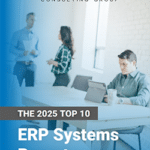

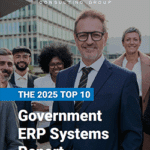




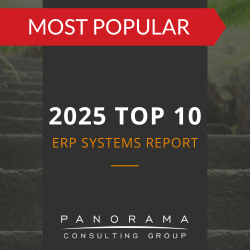
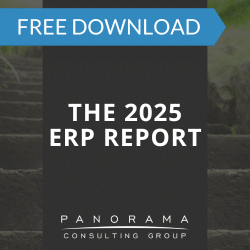
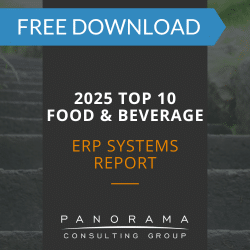
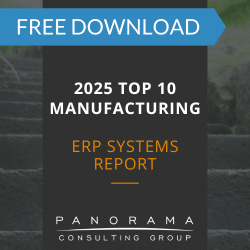

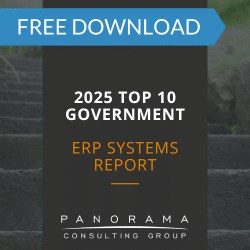

![Do You Know How AI Agents Make Buying Decisions? [Prepare Your ERP System Now]](https://www.panorama-consulting.com/wp-content/uploads/2025/08/ai-agents-in-procurement.png)
